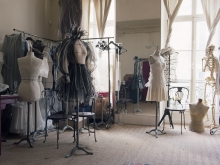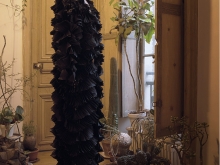Florian Böhm
Wait for Walk
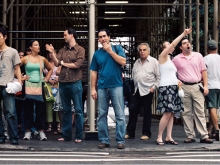
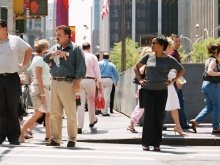
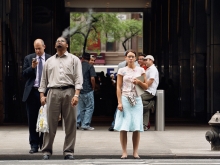
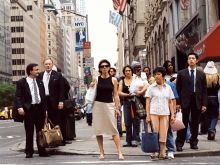
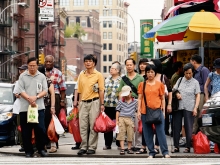
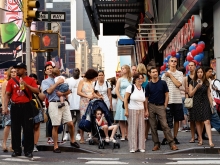
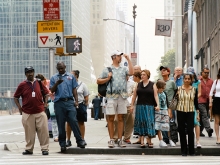
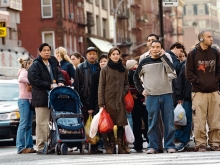
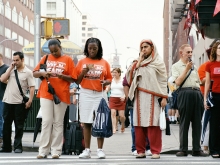
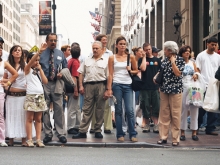
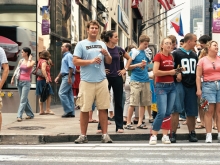
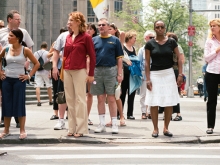
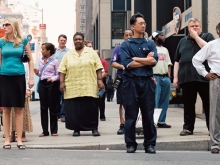
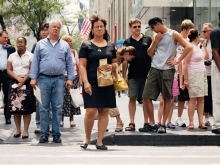
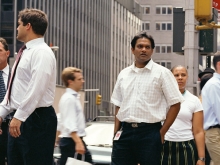
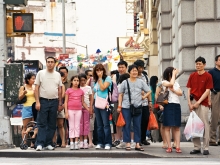
In his new series Wait for Walk Florian Böhm expands the typology of the urban space into a kind of anthropological study of the metropolitan inhabitant. They are studies of waiting passers-by at traffic lights in Manhattan. Through the constant rhythm of a metropolis these moments are short lived, transient, and forever changing constellations of people of all ages, ethnicities, social classes and so forth. From the outset Florian Böhm had very precise conditions in mind, which originate in the idea of the „Dérive-concept" of the Situationists. This stipulatesthat there should be no subjective or aesthetic influences or pictorial strategies deterring from an objectified view of urban reality. In Wait for Walk, Florian Böhm photographed largely unobserved by his subjects and within the time frame of passing cars. It is, in fact, purely the rhythm of the traffic flow serving the pace that creates short-lived constellations, fleeting group portraits that form purely out of chance echoing moments of great urban authenticity. In their precise recording of the „event", the images reveal an arresting panoptic of human individuality and non-verbal communication even though the protagonists, are totally anonymous. Yet the viewer, who like the photographer, are in the same position across the street, is magically drawn into these small moments of human life and individual stories almost as if these random constellations of people were participating in a theatre play where the sidewalk has been transformed into a stage.
"In the photographs of Wait for Walk, the people shown are not presented as anonymous mass decoration but are discernibly individual, permanently rescued from facelessness and historical oblivion. We recognize a differentiated spectrum of city dwellers of all ages and ethnic identities. But who are these people, where do they come from, and where are they bound? One is tempted to raise these existential questions, like Gauguin in his famous picture Where Do We Come From? What Are We? Where Are We Going?" Extract from the catalogue Wait for Walk „On the Physiology of the Street, or: The Drama of Urban Life" by Dr. Ulrich Pohlmann The intention of the „unobserved" moment partly lies within the American tradition of street photography of artists like Helen Levitt, Sid Grossman, Lisette Model or William Klein to name but a few, and extend into the contemporary images like Thomas Struth's Museum pictures. Concurrently Böhm's works, interestingly, also are close to the staged and calculated tradition in photography of artists like Jeff Wall or Phillip Lorca diCorcia. It is perhaps this combination that makes the work so arresting to the viewer: The accidental grouping of people withthe aesthetic of a stage-like production – perhaps a modern inversion of the baroque Dutch principle of the group portrait.
Reading the City
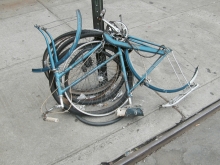
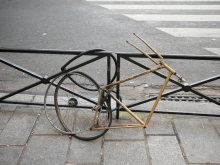
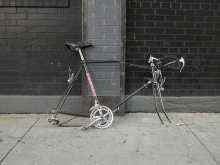
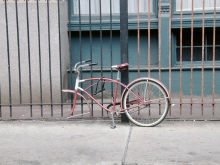

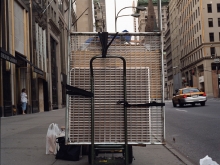
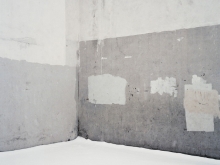
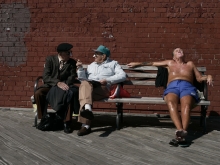
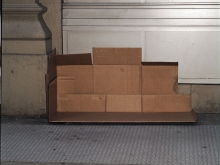
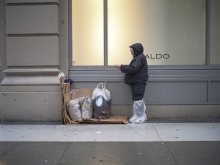
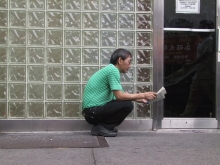
Florian Böhm's work first reached international recognition with the joint archival project Endcommercial®, Reading the City (with Wolfgang Scheppe und Luca Pizzaroni). This project was shown internationally in 2002 at renowned Museums and Institutions and published as a book by Hatje Cantz.
The three artists documented New York City like a kind of image dictionary with hundreds of images, arranged into topics like, broken down bicycles, street lanterns, garbage cans, shopping carts, shop signs, plastic bags, street signs, vendor tables etc. What becomes visible through this work is how people form but also alienate their environment. Through its specific selection and arrangement into a typological system in Endcommercial®, complex sub-cultural conventions and objectified social contradictions of the city become apparent and are registered by the viewer.





